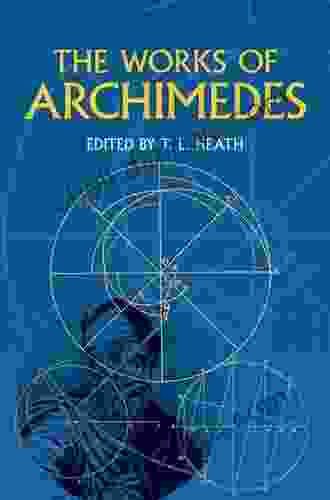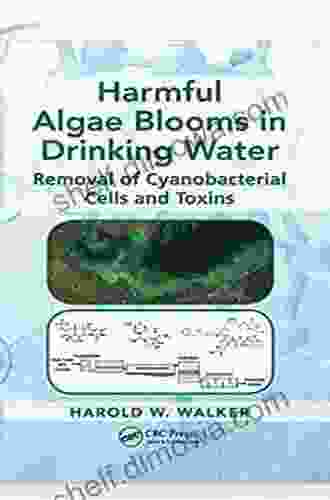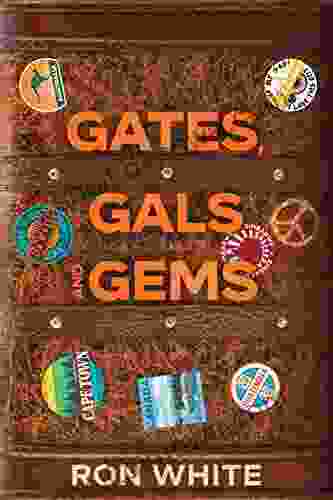Harmful Algae Blooms in Drinking Water: A Comprehensive Guide to Prevention, Detection, and Remediation

Harmful algae blooms (HABs) are a growing concern for water utilities and public health officials. HABs can produce toxins that can cause a range of health problems in humans and animals, including gastrointestinal illness, skin irritation, and neurological damage. In some cases, HABs can even be fatal.
4.5 out of 5
| Language | : | English |
| File size | : | 15869 KB |
| Screen Reader | : | Supported |
| Print length | : | 174 pages |
The risk of HABs is increasing due to a number of factors, including climate change, nutrient pollution, and changes in land use. As a result, it is becoming increasingly important for water utilities to have a comprehensive plan in place for preventing, detecting, and remediating HABs.
Causes of HABs
HABs are caused by a variety of factors, including:
- Nutrient pollution: HABs are often triggered by excess nutrients in the water, such as nitrogen and phosphorus. These nutrients can come from a variety of sources, including agricultural runoff, wastewater treatment plants, and septic systems.
- Climate change: Climate change is causing the water temperature to rise, which can create conditions that are more favorable for HABs to grow.
- Changes in land use: Changes in land use, such as the development of new agricultural areas or the construction of dams, can also increase the risk of HABs.
Effects of HABs
HABs can produce a range of toxins that can cause a variety of health problems in humans and animals, including:
- Gastrointestinal illness: HABs can cause gastrointestinal illness, such as nausea, vomiting, and diarrhea.
- Skin irritation: HABs can cause skin irritation, such as rashes and blisters.
- Neurological damage: HABs can cause neurological damage, such as memory loss and confusion.
- Death: In some cases, HABs can even be fatal.
Prevention of HABs
There are a number of steps that water utilities can take to prevent HABs, including:
- Reducing nutrient pollution: Water utilities can reduce nutrient pollution by working with farmers to implement best management practices, such as using cover crops and reducing fertilizer use.
- Controlling wastewater discharges: Water utilities can control wastewater discharges by upgrading wastewater treatment plants and using advanced treatment technologies.
- Monitoring water quality: Water utilities can monitor water quality to identify areas that are at risk for HABs.
- Developing response plans: Water utilities can develop response plans to quickly and effectively respond to HABs when they occur.
Detection of HABs
There are a number of ways to detect HABs, including:
- Visual inspection: HABs can often be detected by visual inspection of the water. HABs typically appear as a green or blue-green scum on the surface of the water.
- Microscopic analysis: HABs can be detected by microscopic analysis of water samples.
- Chemical analysis: HABs can be detected by chemical analysis of water samples.
Remediation of HABs
There are a number of ways to remediate HABs, including:
- Algicides: Algicides are chemicals that can be used to kill HABs. However, algicides can also be harmful to other organisms in the water, so they should be used with caution.
- Activated carbon: Activated carbon can be used to remove HABs from water. Activated carbon is a porous material that traps HABs and other contaminants.
- Oxidation: Oxidation can be used to destroy HABs. Oxidation involves using chemicals to add oxygen to the water, which kills HABs.
Harmful algae blooms (HABs) are a serious threat to public health and safety. Water utilities can take a number of steps to prevent, detect, and remediate HABs. By working together, water utilities can help to protect public health and ensure the safety of our drinking water.
References
- World Health Organization. (2019). Harmful algae blooms (HABs).
https://www.who.int/news-room/fact-sheets/detail/harmful-algal-blooms-(habs)
- Centers for Disease Control and Prevention. (2019). Harmful algal blooms (HABs).
https://www.cdc.gov/habs/index.html
- Environmental Protection Agency. (2019). Harmful algal blooms (HABs).
https://www.epa.gov/nutrientpollution/harmful-algal-blooms
4.5 out of 5
| Language | : | English |
| File size | : | 15869 KB |
| Screen Reader | : | Supported |
| Print length | : | 174 pages |
Do you want to contribute by writing guest posts on this blog?
Please contact us and send us a resume of previous articles that you have written.
 Book
Book Novel
Novel Page
Page Chapter
Chapter Text
Text Story
Story Genre
Genre Reader
Reader Library
Library Paperback
Paperback E-book
E-book Magazine
Magazine Newspaper
Newspaper Paragraph
Paragraph Sentence
Sentence Bookmark
Bookmark Shelf
Shelf Glossary
Glossary Bibliography
Bibliography Foreword
Foreword Preface
Preface Synopsis
Synopsis Annotation
Annotation Footnote
Footnote Manuscript
Manuscript Scroll
Scroll Codex
Codex Tome
Tome Bestseller
Bestseller Classics
Classics Library card
Library card Narrative
Narrative Biography
Biography Autobiography
Autobiography Memoir
Memoir Reference
Reference Encyclopedia
Encyclopedia Gerald M Carbone
Gerald M Carbone Mary Anne Santos Newhall
Mary Anne Santos Newhall Godfrey Hutchinson
Godfrey Hutchinson Susan Cunningham
Susan Cunningham Richard Askwith
Richard Askwith Gina Greenlee
Gina Greenlee Gloria Skurzynski
Gloria Skurzynski Stephen Currie
Stephen Currie Jean Michel Bismut
Jean Michel Bismut Giacomo Bassi
Giacomo Bassi Phillip Lopate
Phillip Lopate Nagapriya
Nagapriya Gina Damico
Gina Damico Gary J George
Gary J George Jorge Escamilla H
Jorge Escamilla H Karen Cushman
Karen Cushman Kari Hotakainen
Kari Hotakainen Giles Sparrow
Giles Sparrow George Eliot
George Eliot Harriet Ann Jacobs
Harriet Ann Jacobs
Light bulbAdvertise smarter! Our strategic ad space ensures maximum exposure. Reserve your spot today!

 W. Somerset MaughamUnlock the Secrets of Conversational UX Design: A Comprehensive Guide for...
W. Somerset MaughamUnlock the Secrets of Conversational UX Design: A Comprehensive Guide for... Lucas ReedFollow ·19k
Lucas ReedFollow ·19k Gavin MitchellFollow ·12.9k
Gavin MitchellFollow ·12.9k Jarrett BlairFollow ·14.2k
Jarrett BlairFollow ·14.2k Truman CapoteFollow ·7.2k
Truman CapoteFollow ·7.2k Mitch FosterFollow ·2.3k
Mitch FosterFollow ·2.3k Wesley ReedFollow ·10.4k
Wesley ReedFollow ·10.4k Jacques BellFollow ·5.3k
Jacques BellFollow ·5.3k Mark MitchellFollow ·13.7k
Mark MitchellFollow ·13.7k

 Israel Bell
Israel BellUncover the Secrets of Cinematic Storytelling with "Knew...
Embark on a Transformative Journey into...

 Edward Bell
Edward BellCowboy Guide To Packing The Backyard Horse
The Ultimate Guide to Packing Your Horse for...

 Ruben Cox
Ruben CoxThe Works of Archimedes: A Monumental Legacy of...
In the annals of...

 Deacon Bell
Deacon BellThe Reaper: Killer Miller - A Spine-Tingling Western...
A Journey into the...

 Hugh Bell
Hugh BellOcean Warming and Father's Legacy: A Compelling Read for...
Dive into a Poignant Tale...
4.5 out of 5
| Language | : | English |
| File size | : | 15869 KB |
| Screen Reader | : | Supported |
| Print length | : | 174 pages |












